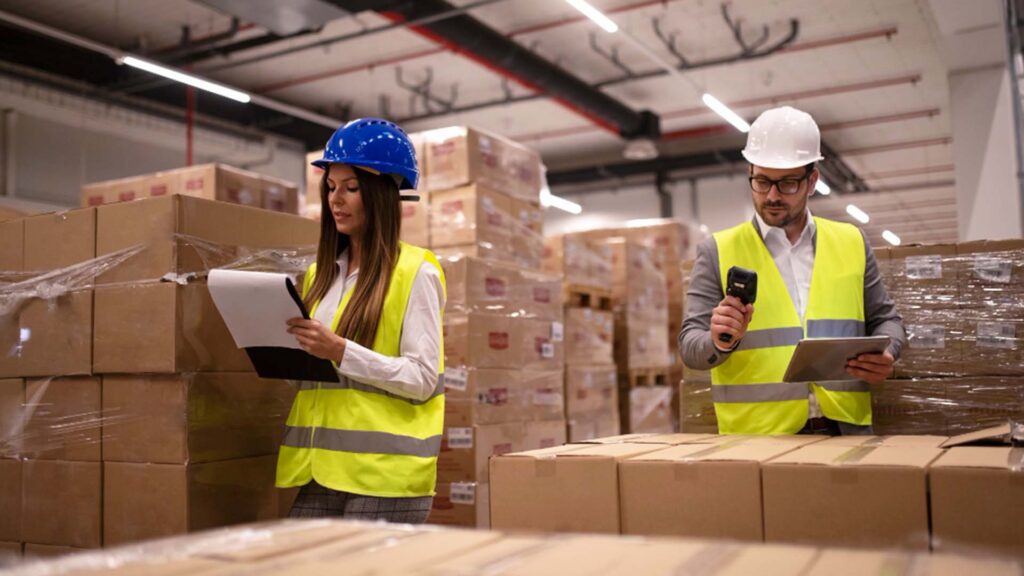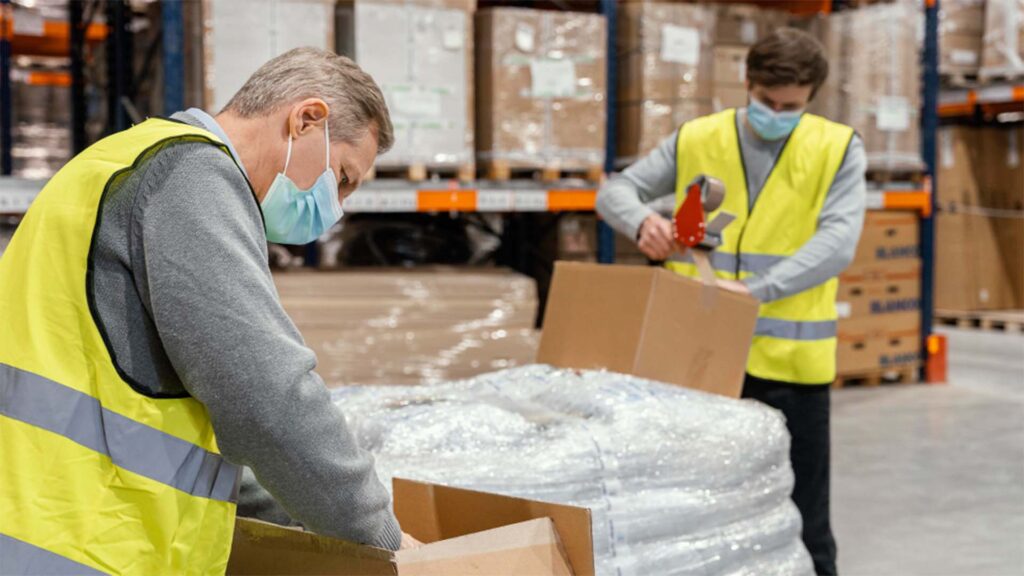Do you think Packaging plays an important role in increasing the overall efficiency of Logistics? Let’s Look! In the world of logistics, packaging plays a crucial role in ensuring the safe and efficient transportation of goods. In this blog, we will explore the different types of packaging in logistics, including primary, secondary, and tertiary packaging, their characteristics, and how they contribute to improving logistics efficiency while ensuring the safety of transported goods.
Understanding Types of Packaging in Logistics
Did Packages has levels? Of course, there is. We can see levels from primary to tertiary packaging, each level serves a distinct purpose in protecting products and optimizing logistics operations.
Primary Packaging
Primary packaging refers to the immediate layer of packaging that directly contains the product. It is designed to protect the product during handling, storage, and transportation. Examples include bottles, cans, blister packs, and pouches. Primary packaging ensures product integrity and often incorporates features like seals, closures, and labels for identification, tamper-proofing, and marketing purposes.
Secondary Packaging
Secondary packaging holds multiple units of primary packaging together. It provides additional protection, facilitates handling, and ensures efficient distribution of products. Examples include cardboard boxes, shrink-wrap or stretch film bundling, and display cartons. Secondary packaging aids in unitizing, grouping, and organizing products for storage, transportation, and display, and supports brand identification and labeling.
Tertiary Packaging
Tertiary packaging, also known as shipping or transport packaging, is the outermost layer designed for larger quantities of products. It ensures the safe handling and transportation of multiple units of secondary or primary packaging. Examples include pallets with shrink wrap, shipping containers, and strapping. Tertiary packaging withstands the rigors of the supply chain, facilitates efficient handling and loading, and provides protection against external factors.
Improving Logistics Efficiency


How do types of Packaging in logistics improve Logistics efficiency? Let’s find out.
Optimize Package Design
Collaborate with packaging experts to design types of packaging in logistics that meet product requirements while considering logistics efficiency, material utilization, and sustainability.
Standardize Packaging
Standardize packaging sizes and dimensions to optimize storage space and load efficiency, and streamline logistics processes. This reduces customized handling needs and transportation costs.
Enhance Protection
Select types of packaging in logistics that materials and design features provide adequate protection against environmental factors, shocks, and vibrations during transportation. Minimize the risk of product damage and losses.
Efficient Handling and Stacking
Utilize types of packaging in logistics that facilitate easy handling, stacking, and palletization to enhance loading and unloading efficiency. Consider features like easy-grip handles, stackability, and compatibility with handling equipment.
Labeling and Identification
Ensure clear labeling and identification on all packaging levels to enable accurate inventory management, traceability, and seamless supply chain operations. Minimize errors, improve efficiency, and enhance customer satisfaction.
Sustainability Considerations
Opt for environmentally friendly types of packaging in logistics materials and explore options for recycling, reusing, or reducing packaging waste. Contribute to environmental conservation and corporate social responsibility initiatives.
Various Types of Packaging in Logistics


Different types of packaging in logistics are utilized based on the nature of the products, mode of transport, handling requirements, and environmental factors. The various types of packaging commonly used in logistics and their benefits and applications are:
Cardboard Boxes and Cartons
Cardboard boxes and cartons are among the most widely used types of packaging in logistics. They are versatile, cost-effective, and available in various sizes and strengths to accommodate different products. Cardboard packaging provides protection against impacts, facilitates stacking, and can be easily labeled for proper identification. They are commonly used for packaging consumer goods, electronics, pharmaceuticals, and many other products.
Pallets
Pallets are flat structures made of wood, plastic, or metal that provide a stable base for stacking and transporting goods. They facilitate the movement of goods using forklifts, pallet jacks, and other handling equipment, making loading and unloading more efficient. Pallets also help in optimizing storage space and protecting products from moisture and contamination. They are commonly used in warehousing, distribution centers, and for transportation by trucks, trains, and ships.
Crates and Wooden Boxes
Crates and wooden boxes offer robust protection for heavy or bulky items during transportation. They are made of sturdy wood and can be custom-built to suit specific product dimensions. Crates provide exceptional strength and durability, making them suitable for goods that require additional protection against rough handling, stacking, or exposure to the elements. They are commonly used in industries such as automotive, machinery, and construction.
Dunnage and Cushioning Materials
Dunnage refers to materials used to fill empty spaces within the packaging to prevent shifting, reduce impacts, and protect fragile items. Common cushioning materials include foam, air-filled packaging, bubble wrap, and packing peanuts. These materials absorb shocks, provide cushioning, and create a protective layer around delicate or breakable products. Proper use of dunnage ensures that goods arrive at their destination without damage.
Flexible Packaging
The flexible type of packaging in logistics has gained popularity due to its versatility and cost-effectiveness. It includes materials such as plastic bags, pouches, and films that can be easily shaped and molded to fit the product’s shape and size. Flexible packaging is lightweight, offers barrier properties to protect against moisture, and provides convenience in handling and storage. It is commonly used for food products, personal care items, and other consumer goods.
Intermediate Bulk Containers (IBCs)
These Containers are large and reusable ones that are designed for the transportation and storage of bulk liquids, crushed and granular materials. They typically have a capacity ranging from several hundred to several thousand liters and are made of materials such as plastic or metal. IBCs are efficient for both transportation and storage, reducing the need for individual packaging units and enabling easy loading and unloading.
Hazardous Materials Packaging
Packaging for hazardous materials follows specific regulations and guidelines to ensure the safe transport of dangerous goods. It includes specialized containers, drums, and the types of packaging in logistics designed to withstand the hazards associated with different classes of dangerous goods. Hazardous materials are the types of packaging in logistics that aim to prevent leaks, spills, and reactions that could endanger human safety or harm the environment.
Conclusion
In conclusion, by understanding the types of packaging in logistics and optimizing their selection and design, organizations can enhance logistics efficiency, protect products, and ensure safe transportation. From primary packaging that directly safeguards the product to secondary packaging that facilitates grouping and organization, and tertiary packaging that provides the outermost protection, each level plays a vital role in the supply chain. By implementing efficient packaging practices, businesses can streamline operations, reduce costs, and meet customer expectations while upholding safety standards.
Collaborating with experienced logistics partners like Galaxy Freight can provide valuable insights and guidance on selecting the most appropriate packaging solutions for your specific needs. By prioritizing proper packaging techniques, businesses can achieve efficient and reliable supply chain management, ultimately leading to improved customer satisfaction and business success.
If you’re looking to optimize your logistics efficiency and ensure the safe transportation of your goods, contact Galaxy Freight today.



